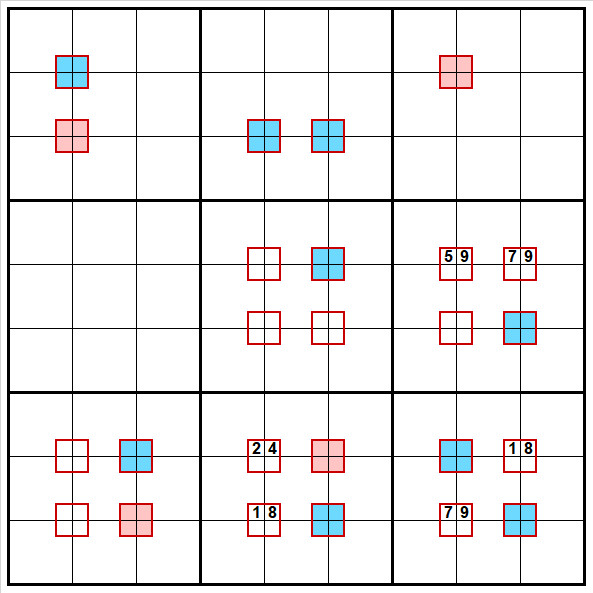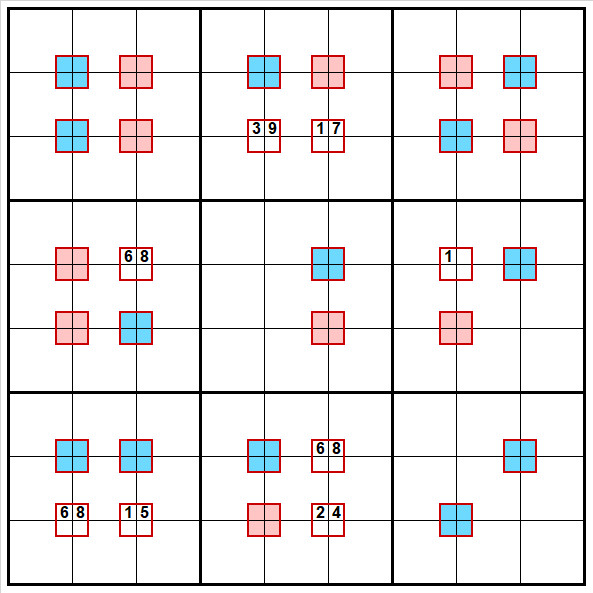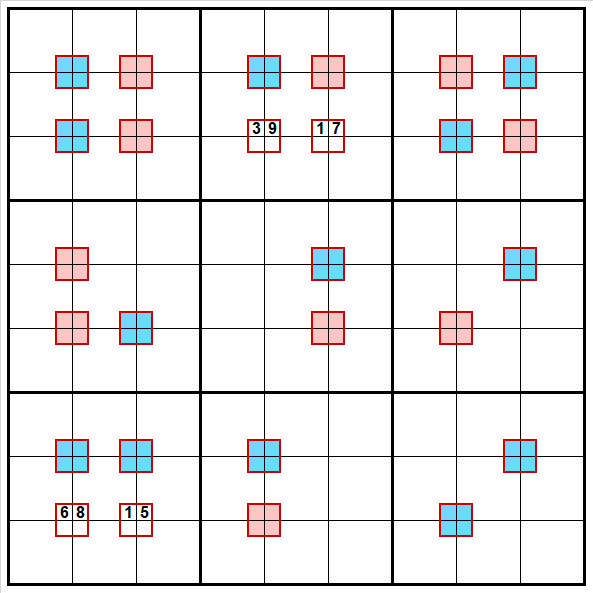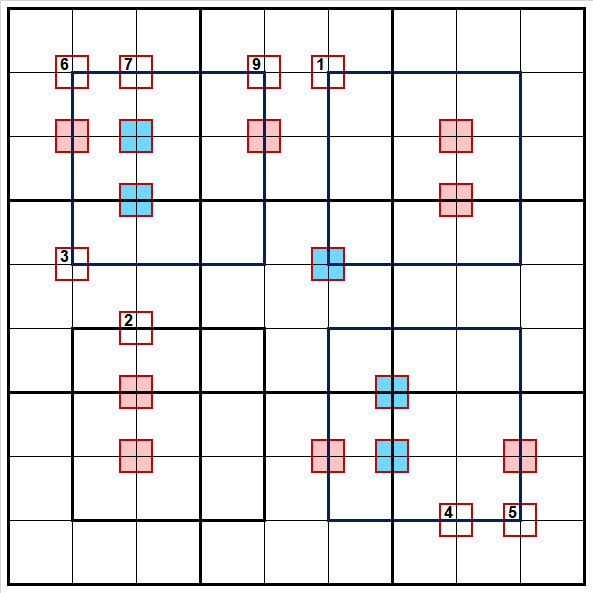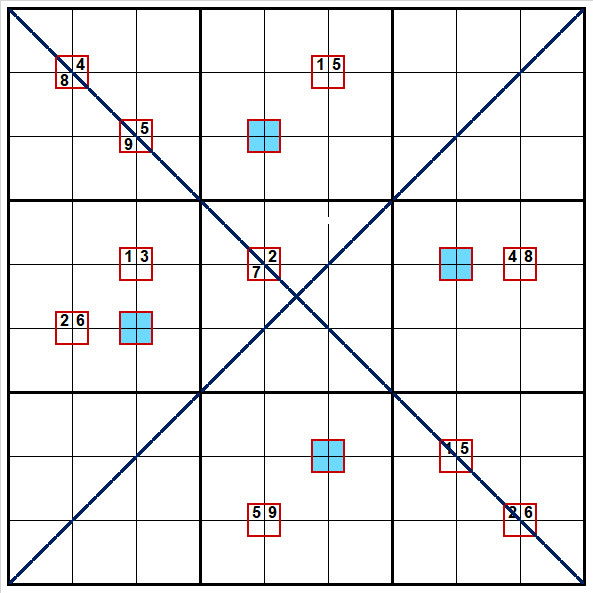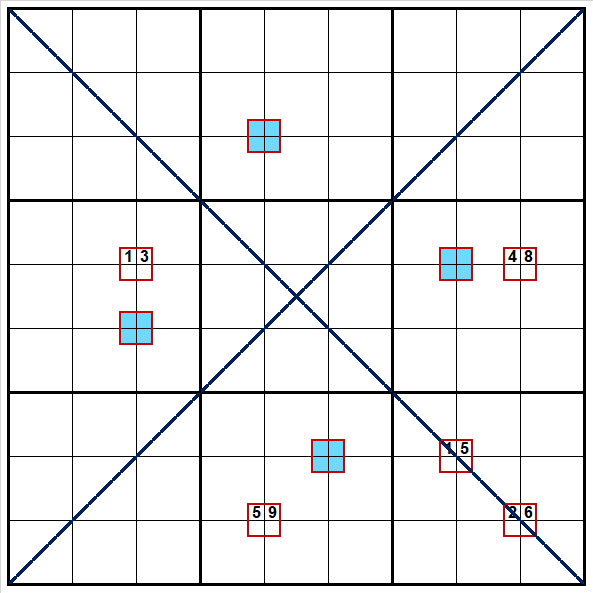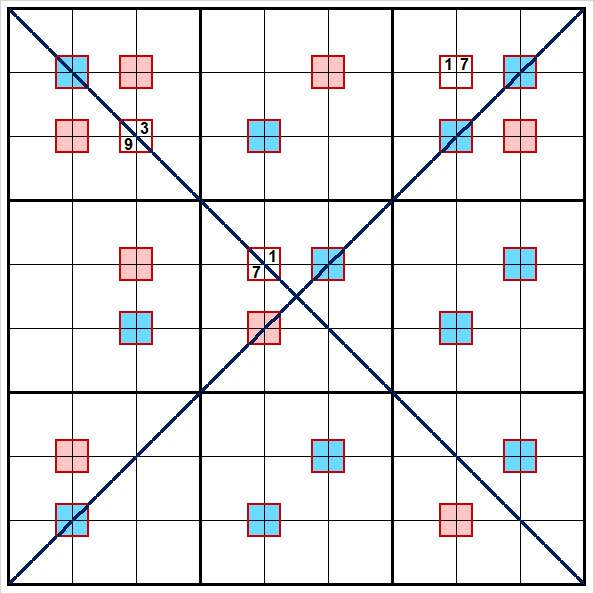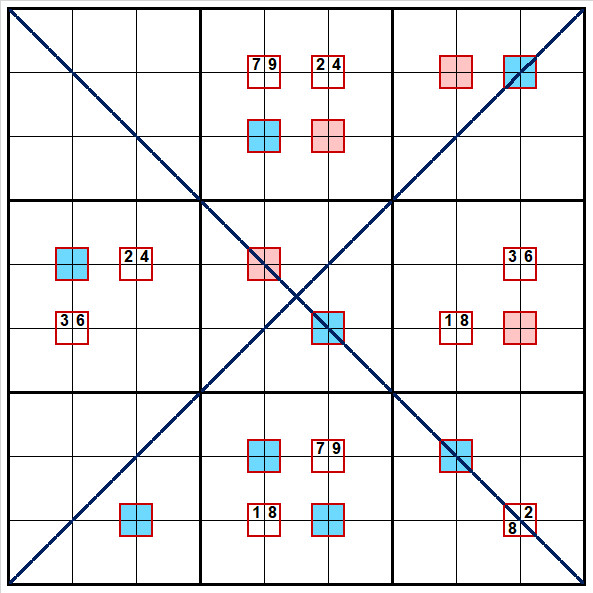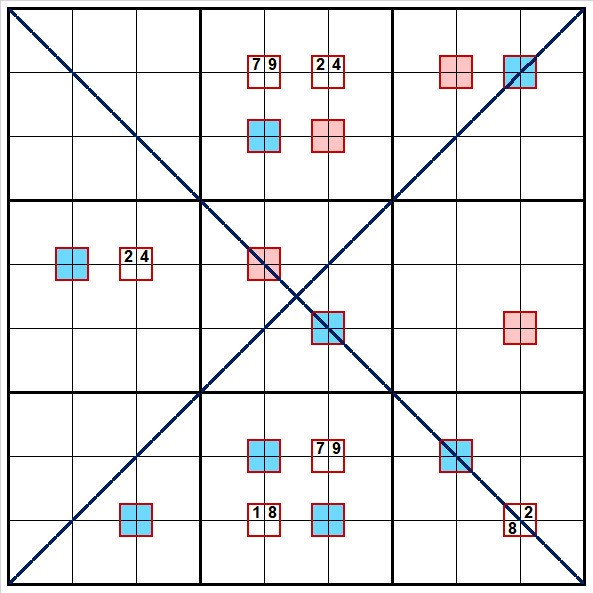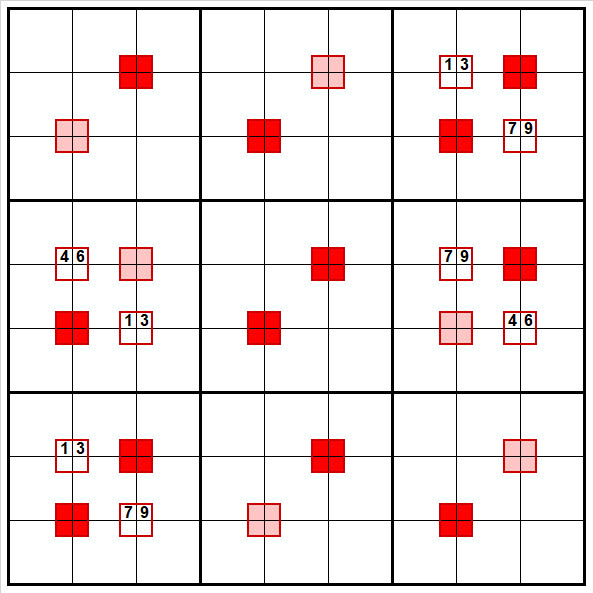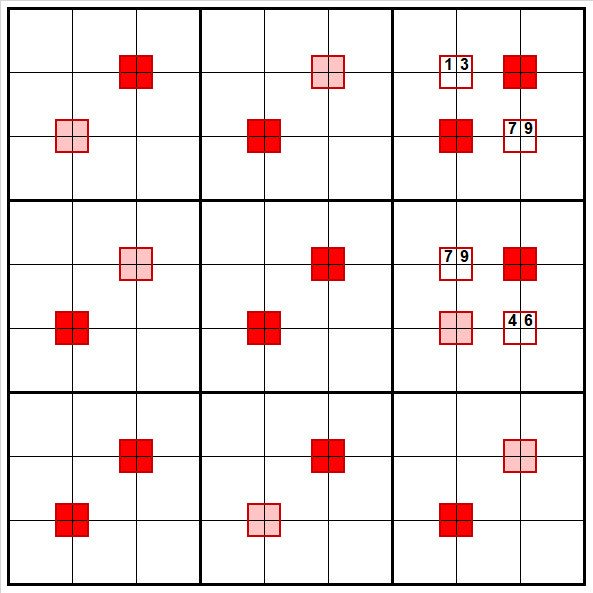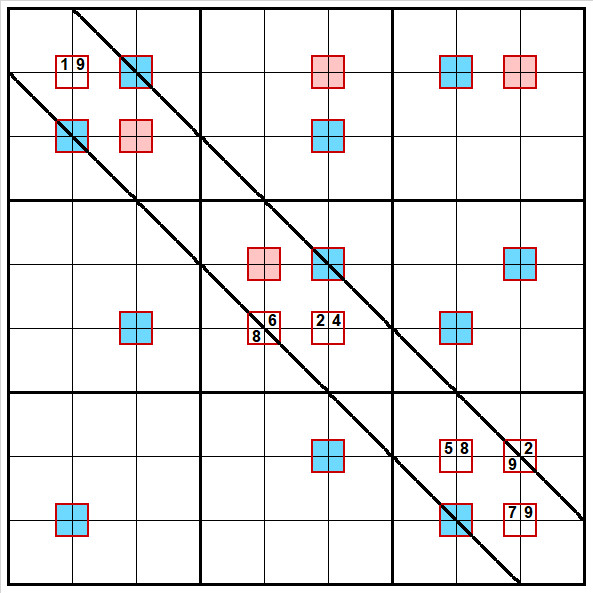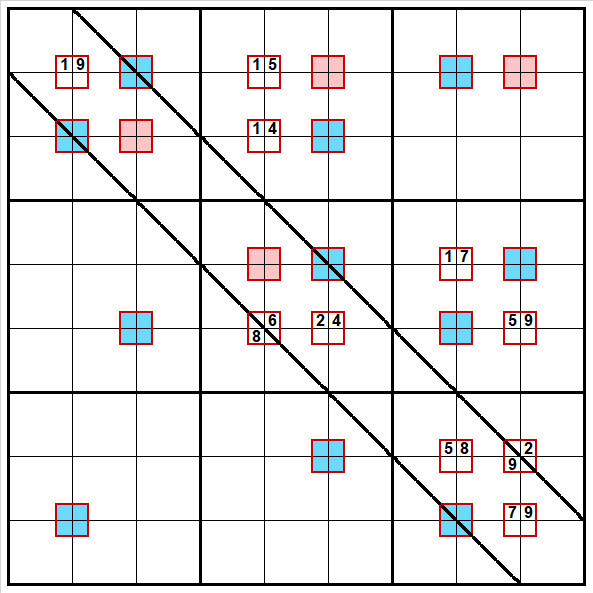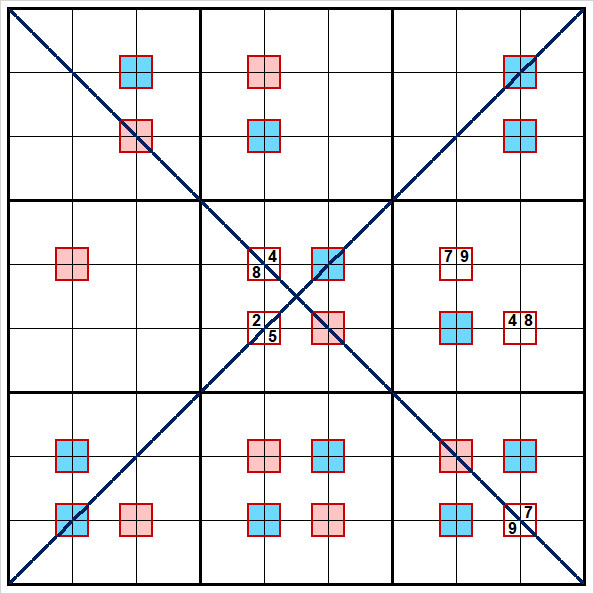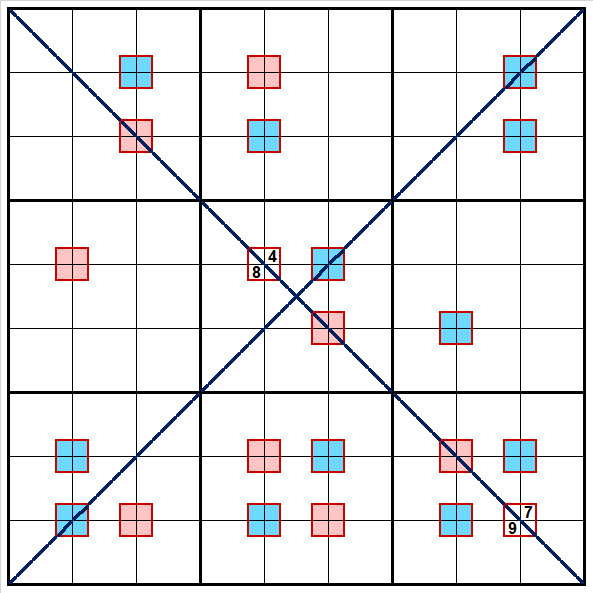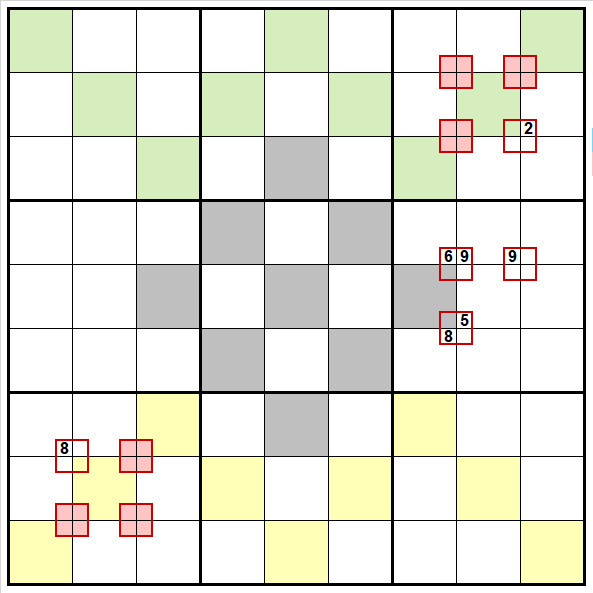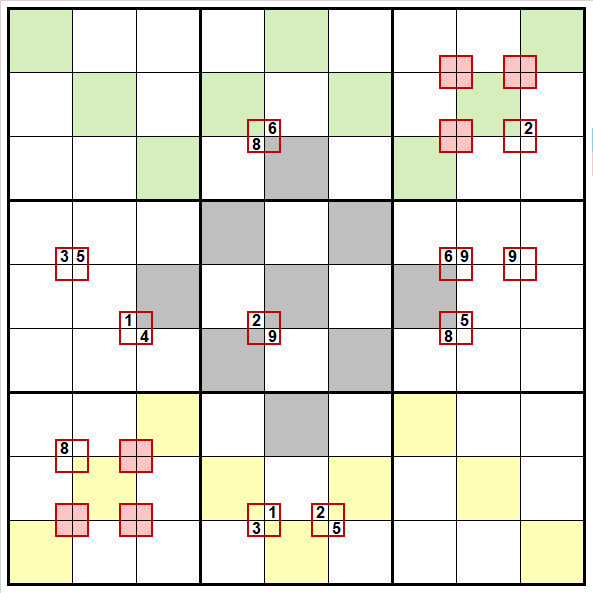David called it Isolated Sudoku; but if you abbreviate it to Isodoku, this has been used by Motris for Isometric Sudoku. Hence we can alternatively call it Singleton Sudoku and abbreviate it to Sindoku which is not used. If you google it you get tsundoku: buying books and letting them pile up without reading them. Note I have a bookcase full which is only there for when my Kindle dies and I do not have electricity (an everyday occurrence here in Nigeria).
Given that like most of you I am locked in at home, I have decided to post daily Sindokus here and on the Assassin site. So the rules again:
A singleton is a number with no adjacent numbers in the four cells.
Each square gives clues about the singletons in the four adjacent cells:
1. If there is no square then no clue is given.
2. A red square means there are four consecutive numbers.
3. A blue square contains four singletons.
4. A pink square contains two doublets e.g. XY and AB.
5. A square with a single number means the other three numbers are consecutive.
6. A square with two numbers means the other two numbers are consecutive.
7. Where the square covers two or more nonets there are no repeats.
I will give all the coloured squares. This means some may be redundant. However I have not initially used this fact in my own solution.
In most cases I use some form of NC in creating the puzzle solution as it makes for better patterns and it allows me to make two puzzles i.e. with and without NC.
If you want a third easier version you can of course use NC with all the plain clues - I do this for my bedtime puzzle.
Sindoku 23
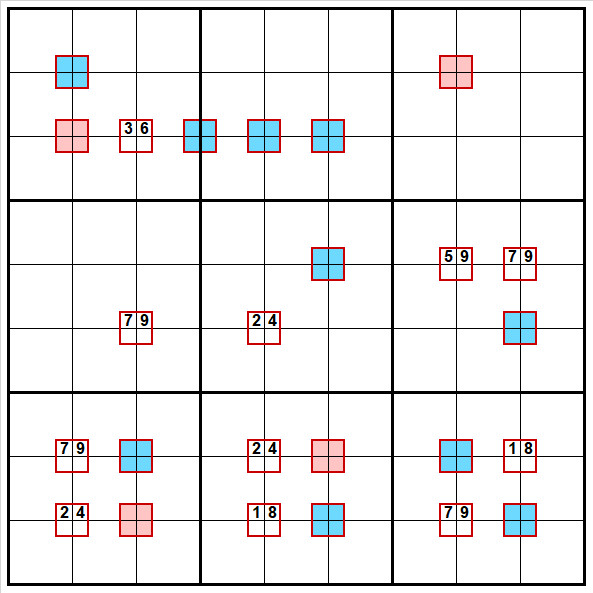
Sindoku 23 NC
